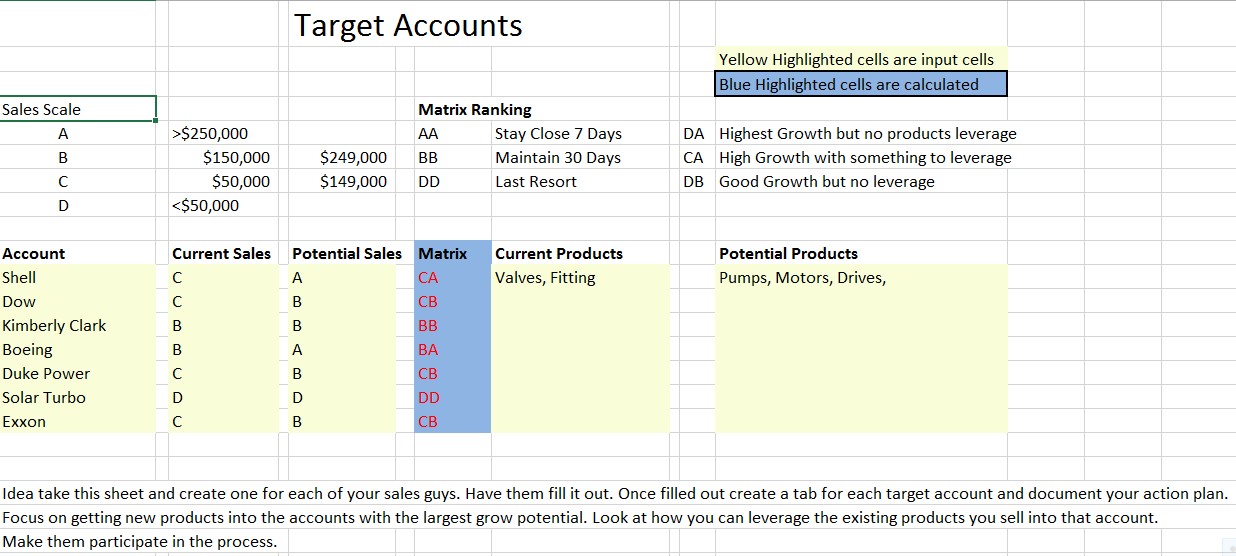How can focused account profiling promote business growth?
Last week during a CRM roundtable webinar I hosted with MCAA, we discussed ways to use CRM data to make better business decisions. One of the hot topics was Account Profiling and how using a 4-dimensional approach can help grow your business volume with focus on where your sales team should spend their time. You may say, “We have a profiling system and we grade our accounts.” In my experience, the information is usually only 1-dimensional; basing it off current or the past years business volume and not growing volume. This is where the 4-dimensional approach becomes invaluable.
There are other variables you could use to determine Target Accounts, but I am a believer in keeping it simple so here are four areas you can consider in determining if an account should be a hunter account or farmer account. Profile the account and answer these questions.
- What is the Current $ Volume?
- What is the Potential $ Volume?
- What are the Current Product/Services the account buys?
- What are the Potential Product/Services the account might buy?
Let’s first start with the current and potential volume:
Current $ Volume:
Consider a grading scale of A, B, C, D for each account. Example: A = >$250,000 year, B = $150,000 to $249,000 year, etc.
Potential $ Volume:
Use a similar grading scale as Current $ Volume. As an example, ABC Chemical is currently buying $50,000 a year from us, but potentially could be buying $250,000 a year. That would put ABC Chemical into the CA matrix category. C for Current $ Volume and A for their Potential $ Volume.
Complete the exercise and you should have all the accounts profiled and organized by category groups.
Category Examples:
- DA = Currently a D, but Potentially an A (High-Growth Target Account)
- BB = Currently a B, but Potentially a B (Maintain Account)
- CA = Currently a C, but Potentially an A (High-Growth Target Account with Leverage)
- AA = Currently an A, but Potentially an A (Key Account)
(See the sample worksheet below)
 (download the worksheet here)
(download the worksheet here)
This will give you laser focus based on if the account is an account positioned for a hunter (growth) or should it be handled by a farmer (maintain). So what are the first accounts you should focus on for growth? The CA accounts. These are currently doing some business with you and have the potential to be an A account. The CRM system can be set up to help you make sure you are staying focused on these growth accounts. So, if you have CA accounts with no new activity or touches within the last 30 days, this is a red flag and the sales team should be refocused.
Where does the 3rd and 4th dimension come into play? Start with your CA accounts and now dive a little deeper and list the current products/services you are selling them and then list the potential products/services. To start with take 1 potential product and create a “proactive” opportunity in your CRM to help you manage the process for winning this business.
While discussing this, the comment was made by a participant: “Another dimension to consider would be clones of existing customers. Shouldn’t we use those as prospects?” Absolutely, as they say, ‘Birds of a feather flock together’! One should also consider tracking accounts by industry and application. Taking past sales or service successes and carrying them into similar applications is a great way to promote growth in other accounts, and this matrix can be set up in the CRM.
Using this approach can create a structured process to make sure your team has the right people pursuing and maintaining the right accounts. Outside Sales can focus on growth accounts and allow Inside Sales to focus on maintain accounts by using the 4DAP (4 dimensional account profiling) system and taking ‘subjective’ out of the equation. In a nutshell, you want to make sure you don’t have hunters doing the farming!
